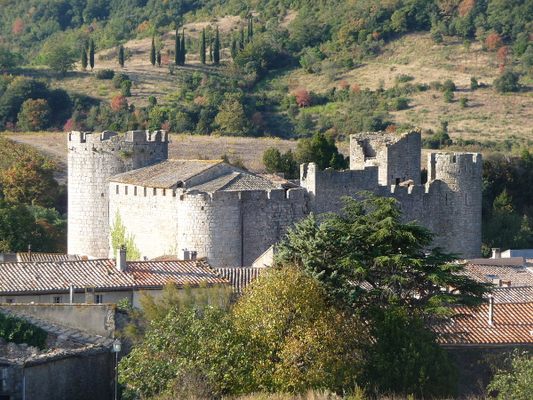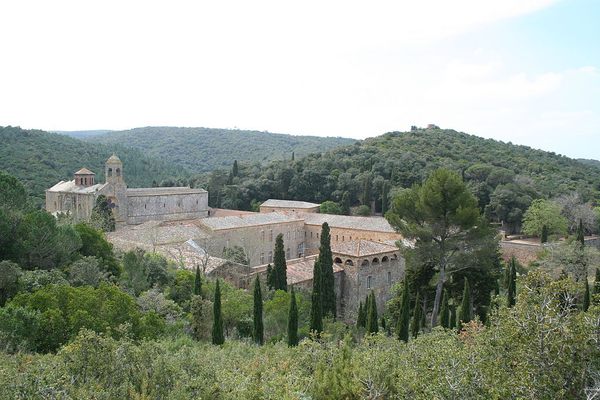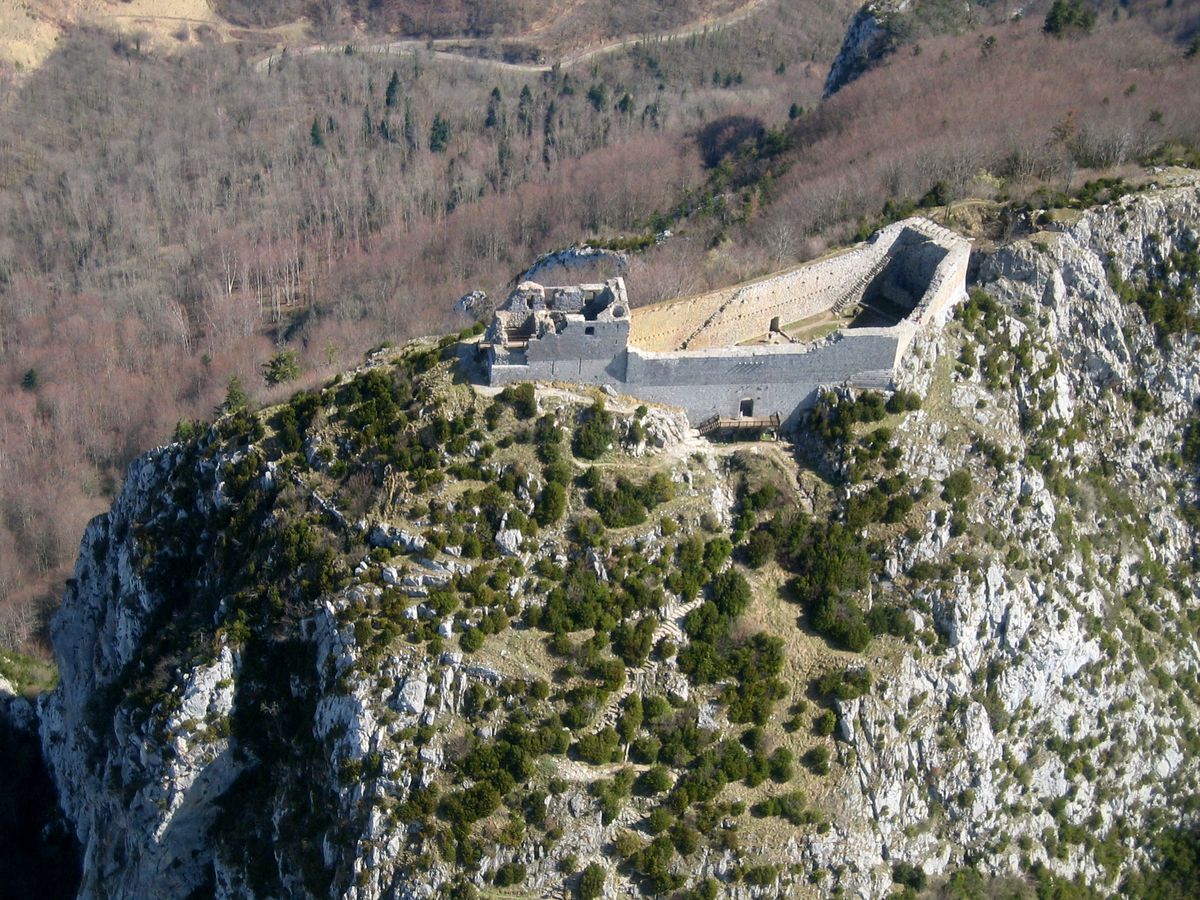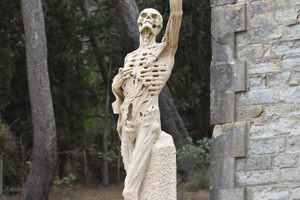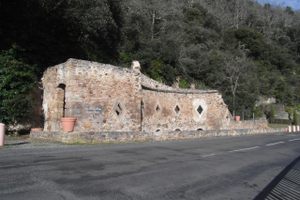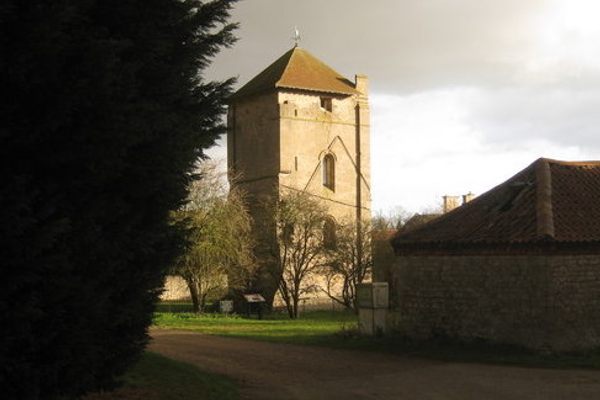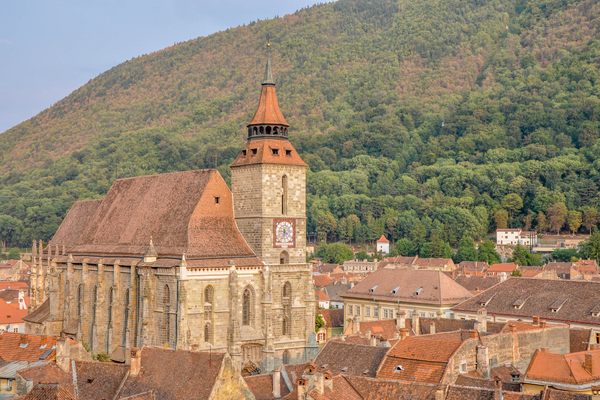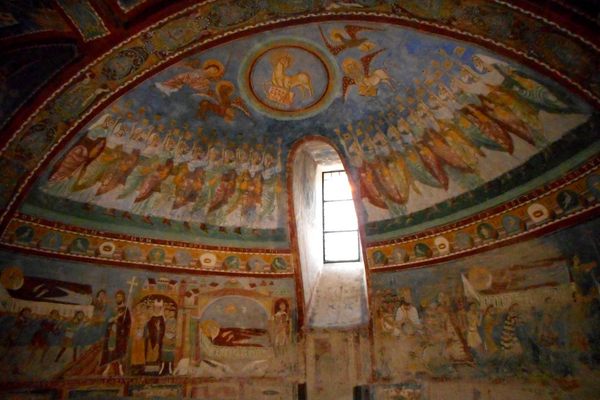About
Back in the 13th and 14th centuries, the South of France was a center of Catharism, a sect of Christianity described as “the most successful heresy in history.” The region of Languedoc—which was under the control of the Kings of Spanish Aragon at the time—is also known as Cathar Country. “Pays Cathare” signs dot the countryside, and you cannot drive far in any direction without coming upon the ruins of a Cathar fortress.
The first battle of the crusade against the Cathars occurred in Beziers, close to the Spanish border. Arnaud Amaury, a Cistercian abbot designated to lead the crusade, had arranged his soldiers outside of the city walls to lay siege to the town. The men of Beziers were confident that their fortifications were secure. Harsh words were exchanged between the men on the walls and the crusaders. Suddenly the gates to the city opened, and a large band of Bezierians poured forth to do battle. Amaury’s forces made quick work of them. They then turned and discovered the Bezierians’ big mistake: they had left the gates open.
Amaury immediately told his army to charge. One of his men asked: “How will we know which are Cathars?” Amaury replied with his famous quote: “Kill them all! God will recognize his own.” The crusaders proceeded to slaughter around 7,000 citizens, including women and children, even those who had sought sanctuary in the Catholic church. This horrific incident was not only the first of many in the battle to stomp out Catharism, but also the first crusade to occur on European soil. Most importantly, it was the first crusade that pitted Christians against Christians.
Catharism was a dualist religion. They believed that God created Heaven, the Kingdom of Light where no evil exists. Whereas the material world, where evil prospers, was created by Satan. Man's purpose is to free their soul from this “prison of flesh” and reunite it with the mind in the presence of God. This can only happen if the soul attains knowledge, only attained through baptism—not by water, but by “fire and spirit,” as Christ gave to his apostles. Failing this, when the body dies, the soul will pass to another body. This cycle will continue until salvation is attained. In other words, you stay in this cycle until you finally get it right.
The Cathars believed themselves to be “Good Christians,” or "Bon Hommes." Their priests, both men and women, were called “Parfaits,” or “Perfects,” as in “perfect Christians." Cathars did not believe in the church hierarchy of archbishops, cardinals and the Pope. They considered the church decadent; this was during a time when the Catholic church was a bit scandalous, and the clergy accustomed to living large. The Parfaits also did not ask the believers for monetary offerings, which had to be a huge selling point.
The simple, trapping-free religion appealed to many, and Catharism grew in popularity. In 1198, Pope Innocent III decided that something must be done. He sent two legates to the Languedoc region, both monks from the Abbey of Fontfroide. But their attempts to convince people to abandon Catharism in favor of Catholicism were unsuccessful. The Pope proceeded to enlist the Abbot Arnaud-Amaury to raise a company of Crusaders. And so, the crusaders won their first victory at Beziers in July of 1209. Then the "ost," as the army of Crusaders was called, proceeded to Carcassonne, a well-known Cathar haven.
The castle at Carcassonne is world famous. It has been used as a model for many King Arthur-type fables, such as Camelot. It has all the accouterments necessary for a castle cum fortress: moat, drawbridge, portcullis, turrets, two concentric ramparts—one inside the other. At that time Carcassonne was located on the border with Spain, so the fortress had strategic military importance. At any rate, Carcassonne had never been defeated, until now. The crusaders occupied the town, and then set their sights on Minerve.
Minerve was difficult to besiege, but the army used the tried-and-true tactic of capturing the town's water supply. The siege lasted five weeks before the lord of Minerve gave up in order to save the townspeople, who were dying of thirst. Cathars were asked to recant their faith. About 140 of them refused, and were burned to death in the flames of a pyre. Later, at the request of the Pope, the crusading army launched an attack on Toulouse, whose count was not taking sufficient action against the Cathars. The city was saved with the signing of the Treaty of Paris.
Beginning around 1224 the Crusade was stuttering. Thus began a long period of diplomatic maneuvering. A new monastic order, the Dominicans, were empowered to interrogate suspected Cathars using a variety of techniques, including torture. They were responsible for the deaths, usually by burning, of thousands of “alleged” heretics.
The Languedoc area is rugged, mountainous, tree-covered, ridden with caves. It offers countless places to hide, and many of the Cathars took refuge in the countryside. One fortress where many of them gathered was Montsegur. Located high atop a rocky spire in the foothills of the Pyrenees, it was virtually impregnable. This was the site of a long and bloody siege that would mark the beginning of the end for the Cathars.
After months of fighting, the surviving Cathars were told to denounce their faith and go free or were burnt at the stake. Hundreds bravely threw themselves onto the pyre. After the fall of Montsegur, the last Cathar stronghold, the pursuit of the remaining Cathars continued by the Crusaders and the Inquisition. The last known Parfait was captured and put to death at the stake in Villerouge Termenès in 1321.
Related Tags
Know Before You Go
The map coordinates and address given are for the Château de Villerouge-Termenès (Castle of Villerouge-Termenès), where the last known Cathar Parfait was put to death. There are many other sites to visit within Cathar Country, such as the aforementioned fortress of Carcassonne, Fontfroide Abbey, and the ruins of Château de Montségur (Montségur Castle), perhaps the most well-known Cathar castle. This is a large area and would take four or five days to visit. The beautiful town of Narbonne would be an excellent base.
Published
October 5, 2018
